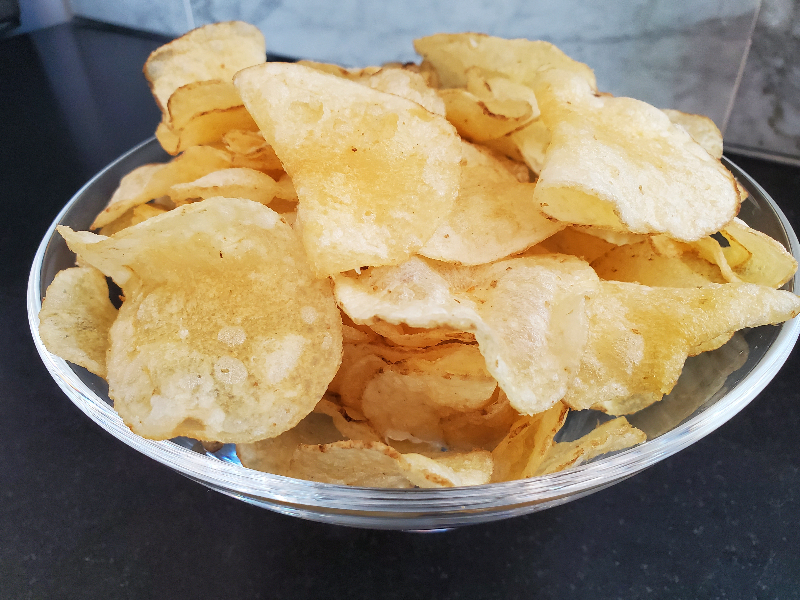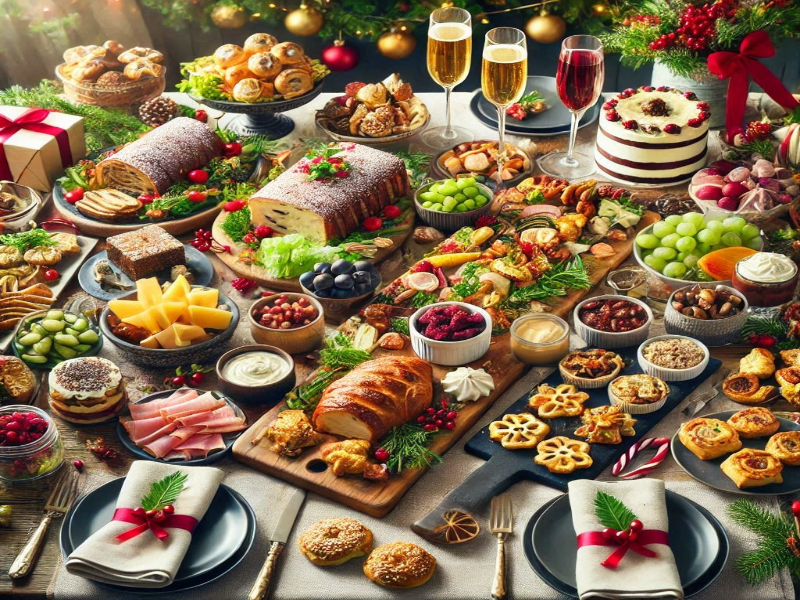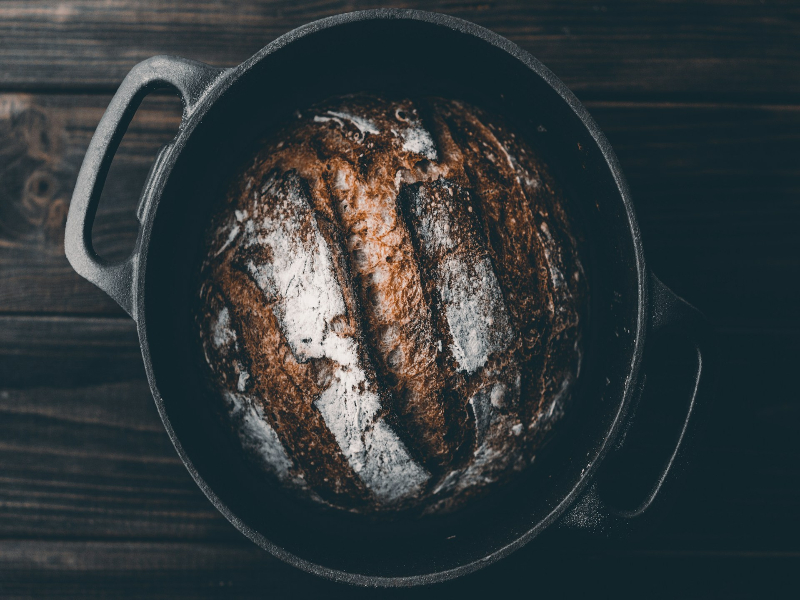
Kettle Chips
Have you ever eaten just one potato chip? Do you even know anyone who’s been able to stop at one?
Not me. The crunch, the saltiness, and how about when they’re freshly made? Oh my!
My first taste of kettle chips was in Maui, Hawaii, and although they were different than, say Lay’s, I had no clue at the time those were kettle chips.
Salem, Oregon food entrepreneur Cameron Healy was in Maui in the early 1980s, falling in love with those chips, too. Once home, he founded Kettle Chips and in 1982 the brand hit the shelves.
About 50% thicker than it’s almost paper-thin relative, it’s the cooking technique that makes the difference. Traditional crispy chips are cooked hot and fast; kettle chips fry longer at a lower temperature.
Throughout the batch-frying process, the chips are stirred, preventing sticking together. The cooking temperature follows what you might call a U-curve – the oil reaches temperature, immediately starts dropping when the potatoes are added, then begins rising again. As the temperature increases, the potato starches absorb water, creating a gel gluing its walls together, making the chip stronger. The water is driven off, resulting in rigid starch molecules with a crisscrossed, open, crunchy structure.
If you’re a food science nerd like me, according to researchers who study this, it’s not unusual to keep eating chips, even if you’re not hungry. There’s even a term for it: Hedonic hyperphagia.
Tony Goldstone, MD, faculty of Medicine, Department of Brain Sciences, at Imperial College London, as part of a study, while monitoring volunteers’ brains, showed one group pictures of potato chips and junk food, and other group, substance abusers, photos of drugs and alcohol. In both groups, the same areas of the brain were affected.
Research also shows stress hormones increase the need for salt. When we crave and eat salt, a region in the hypothalamus becomes receptive to and releases dopamine, the chemical inducing the feeling of pleasure, gratification, and a craving for more.
Adding in sugar that’s camouflaged as starch in potatoes, it’s the other component making us wanting one more, then another, then other. You get the picture.
Classes
Eat Well & Age Gracefully with Chef Barry Infuso, the monthly AARP-sponsored series, is a huge hit. AARP’s generosity makes it possible for you to take these classes for free. Thank you, AARP!
Six seats are available for the September 21 Chinese Vegan Kitchen. On the menu: Stuffed Cabbage Rolls, a traditional temple dish, blanched cabbage leaves are stuffed with a savory mushroom filling then wrapped. Fragrant Dressed Tofu with Garlic and Basil is blanched tofu seasoned with fresh herbs; the preparation is minimal – the taste is sensational.
On September 25, it’s Cooking for the Health of It. Chef Barry takes his inspiration from Dean Ornish, MD, an advocate for using diet and lifestyle changes to treat and prevent heart disease. On the menu: Hummus, Pasta Primavera topped with nutritional yeast instead of cheese; and a “nice cream” frozen treat made in the bullet: Frozen Bananas and Blueberries with Almond Milk.
The October 12, Love Your Gut, will feature a menu good for the gut microbionomes that helps us digest food, produce vitamins, fight infections, regulate inflammation, and also influences mood, behavior, and brain function.
Celebrate Oktoberfest with Chef/Butcher Brett Sippy on September 27, the theme of his monthly Behind the Butcher Counter class. The taste of Bavaria menu is Pork Schnitzel with Classic Lemon Sauce; Warm German Potato Salad with Applewood Bacon; Barrel Cured Sauerkraut with Caraway Seeds; and Cranberry- Apple Mini Strudel.
What’s the Buzz on October 18? Like wine, cheese and chocolate, honey has joined the ranks as an artisanal obsession. Experience honey from the Sonoran Desert, as well as from around the world, like never before and taste it like a sommelier tastes wine with beekeeper and sommelier Noel Patterson of Dos Manos Apiaries.
News & Notes
What fabulous meals are you enjoying so far during Sonoran Restaurant Week? Now in its fifth year, the September 8-17 event is produced by Tucson Foodie and supported by Visit Tucson, Rio Nuevo, Tucson Metro Chamber, Commerce Bank of AZ, The Downtown Clifton Hotel, Tucson Weekly, and Tucson City of Gastronomy.
Wishing you joy in the kitchen,
Michele
Kettle Chips
1 lb. russet potatoes, unpeeled
2 quarts vegetable oil
½ teaspoon table salt
1. Line a rimmed baking sheet with multiple layers of paper towels. Set a wire rack on baking sheet.
2. In a 7-quart Dutch oven, add oil and bring to 375°F over medium heat.
3. While oil is coming to temperature, use a mandolin to slice potatoes to 1/16-inch thickness.
4. Carefully add small handfuls of potatoes to oil until all are added. The oil will be very hot and will bubble briskly. Try to keep potatoes from sticking together. Stirring constantly with a wooden spoon, cook until bubbling calms down and chips start to stiffen, 2-4 minutes.
5. Keep cooking, stirring frequently, until edges are rigid, about 5 minutes. Pay attention to the oil temperature; it needs to remain at 240-250°F; adjust heat as needed to maintain temperature.
6. Using a spider or slotted spoon, continue flipping and stirring until bubbling stops and chips are light brown and crisp, 6-8 minutes more. Pay attention to the oil temperature; it needs to be 280-300°F; adjust heat as needed to maintain temperature.
7. When done, remove chips with spider or slotted spoon to wire rack. Sprinkle with salt; cool 30 seconds; transfer to a bowl and toss to evenly distribute salt.
8. Store leftovers in a sealable plastic bag; keep at room temperature for up to 5 days.





